Corsican Craft
Conversations with the artisans and creatives safeguarding tradition and island life.
Words by Kieren Toscan & Photographs by Renae Smith
It was October when we arrived in Bastia, Corsica’s northernmost city. The summer had already left on its annual journey south, taking with it the best of the heat and the bulk of the tourists; a draw I would argue was a win, allowing us to have the still-sun- kissed island all to ourselves. Alas, as a result there are fewer flights to and from Corsica at this time of year and this, combined with vagaries of airline delays, meant it had taken the best part of the day to fly from London. Nevertheless, rest and Napoleonic history were on my mind - even if they required further travel - so my wife and I left the airport to chase the softening glow of the sun west towards La Balagne.
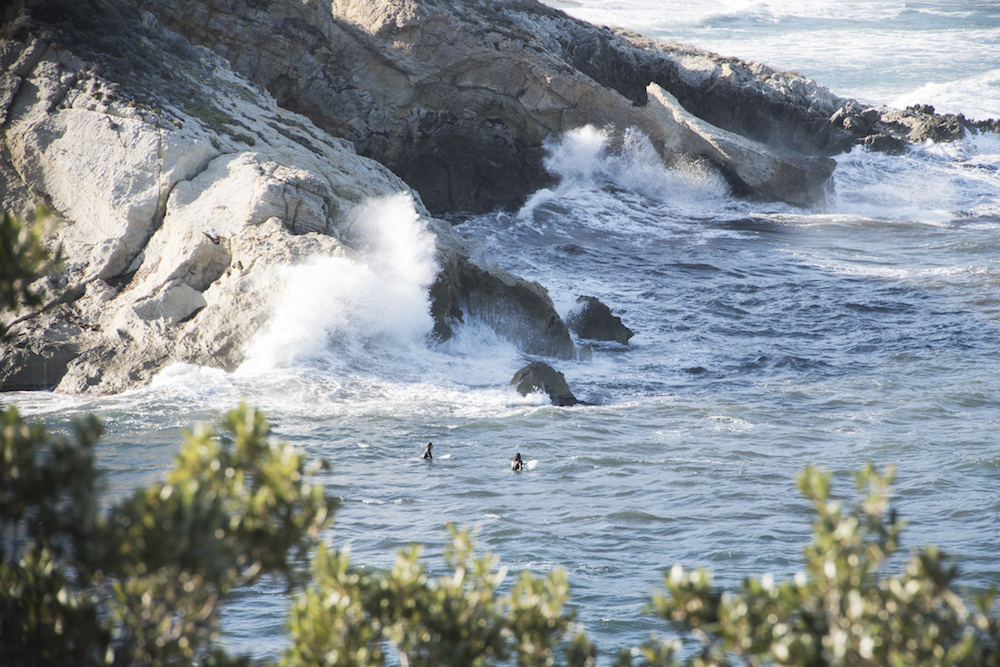
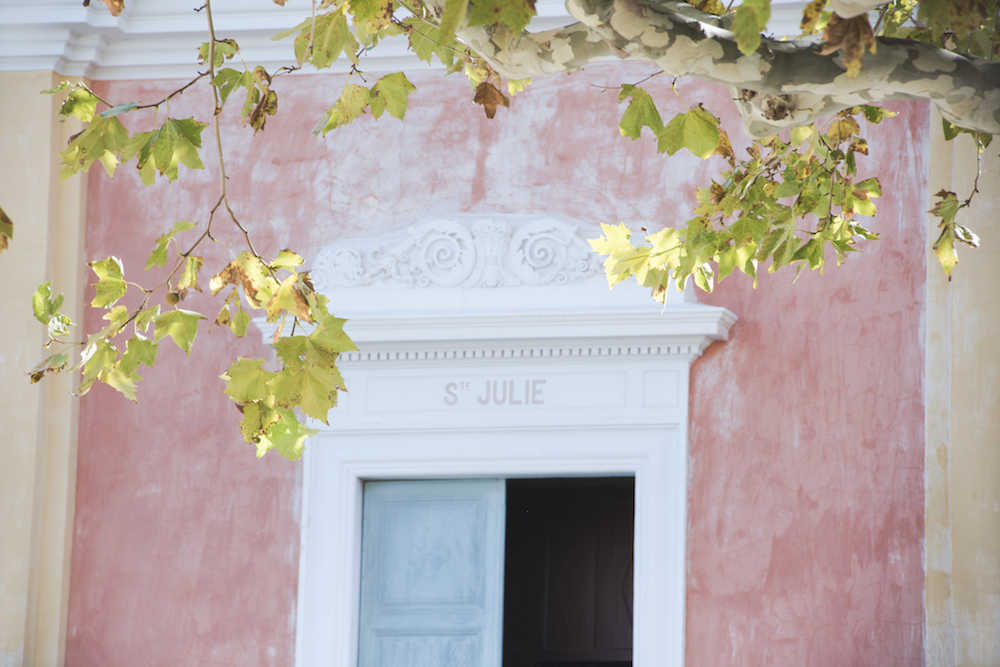
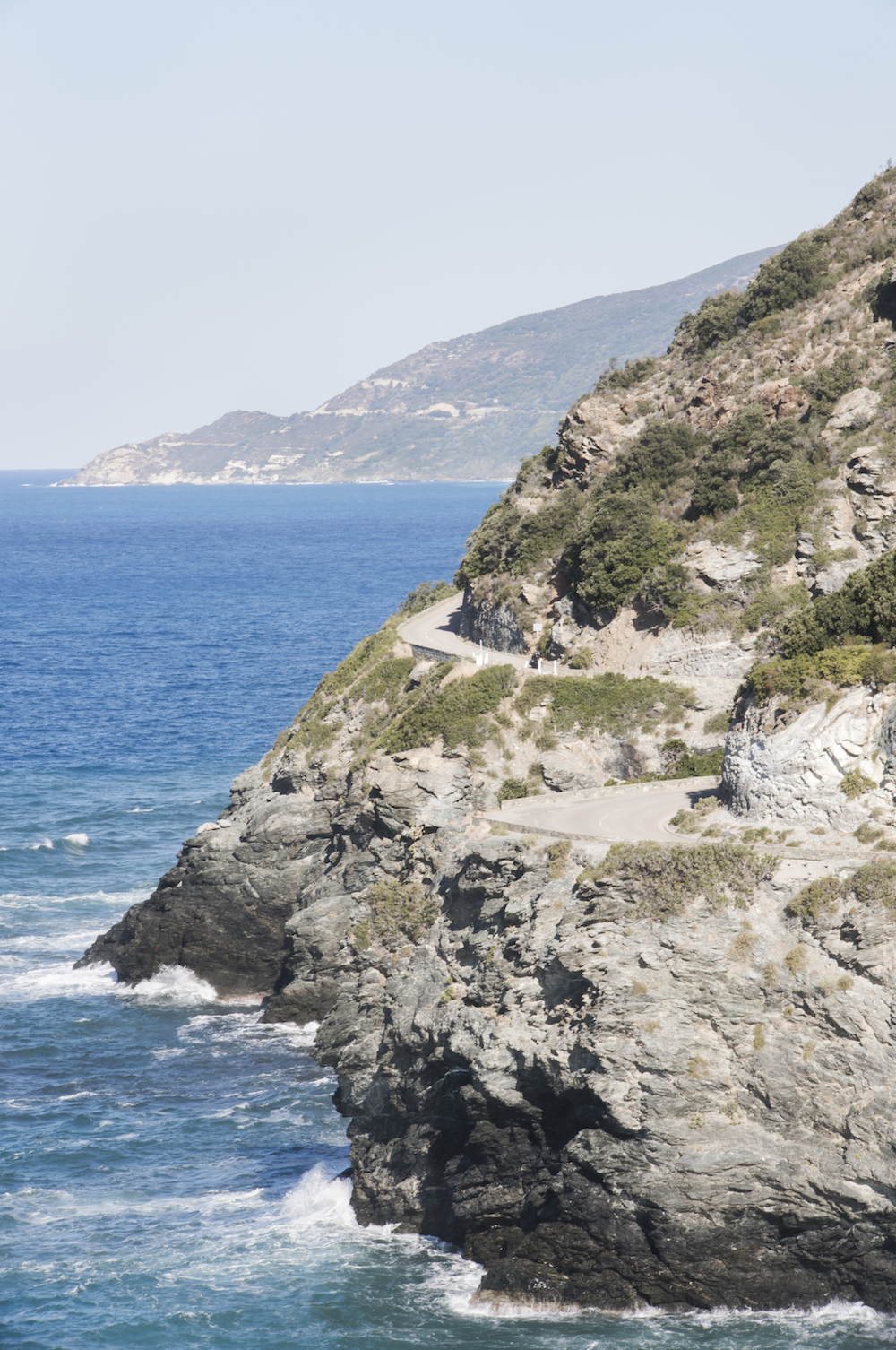
Bastia to La Balagne is not far as the crow flies and, even accounting for the narrow roads that wind and unwind along the way, it should have taken little more than an hour to drive the distance, yet we found ourselves arriving well on the wrong side of two. Traversing the tip of the high granite backbone that runs almost the length of the island proved to be more than we bargained for. But this wasn’t a challenge of conditions, rather one of attention.
No sooner had we started our journey than the landscape began to show us glimpses of its harsh beauty, beckoning us to stop at every turn and marvel at its offerings. Partially covered in dark green, fragrant scrub - which makes up a biome known as maquis - the ranges and peaks seemed to fold over and into themselves, again and again off into the horizon, and grew more indiscernible as the sun receded, almost to the point of confusion. Was that another range? An angry bank of dark clouds making its way towards us? Or something else entirely?
It was harder still to keep moving once the ranges had parted and dropped away to reveal the deep blue of the Ligurian Sea, still sparkling in the early evening light. Bordered in parts by golden sand, topped with the occasional white cap, and finished with gusts of clean, salty air, the scene was one we had known would be bountiful, but was unexpected nonetheless - worlds away from the wintery London we had so recently departed. By the time we reached La Balagne we were wholly enlivened and rendered utterly refreshed, retiring with the travails of travels past a faint memory.
Given our glorious introduction to Corsica, we awoke the next morning greedily wondering what more it would gift us. The answer revealed itself as we arrived in Pigna, a small medieval village of sand-coloured buildings, blue shutters and cobbled alleys, perched on a hillside with expansive views towards the coast. It was here that we had the good fortune to meet some of the artisans of Strada di l’Artigiani - the Artisans’ Road - a serpentine, scenic drive between the villages of La Balagne, conceived in 1993 to help regenerate the region and promote Corsican heritage. Along this route one can find craftsmen and women creating everything from sculptures, ceramics, honey and wine, to leather goods, music boxes, wooden flutes and guitars. Part of the joy of journeying along Strada di l’Artigiani is found not just in the creations encountered but in the time spent with the artisans themselves after you’re welcomed into their workshops, where they reveal just how keen they are for visitors to understand a little more about them, their art and their island home.
Renae and Kieren's full article appears in the Lodestars Anthology France magazine. You can order a copy here.
The Playground of the Gods
Hiking in Hokkaido.
An extract from the Japan magazine - words by Kasra Lang & illustrations by Marina Marcolin
Mount Asahidake, the highest point of this wild island, rose up before me in a great mass of black ash and eternal snow. The volcano hasn’t erupted for 200 years but the smell of sulphur still stings the nose. I stood on the edge of Sugatami Pond, one of many lucid pools that mark this marshland, and watched as the fog thickened around the slopes. The water at my feet was like glass, without crease or wrinkle despite the rain, almost mythical, and I was struck by an urge to kneel and drink from it. I refrained, of course - it would have sooner made me sick than strong - but perhaps I should have, for in the end I would need the courage. A typhoon was coming in from the Pacific and I had five days to walk the crescent spine of the national park before it made landfall over Honshū and climbed the length of Japan towards Hokkaido. At last I tore myself away from the spectral water and set off eastward, my hood pulled low over my eyes.
I passed no one on the way up, moving through slanted plains of crumbling volcanic glass which turned to ash as I climbed higher. Before long everything I could see seemed to reflect back to me in negative, divided between the black earth and a white sky. Indeed the only colour in that monochrome world was the moss growing under the rocks, glowing like green jewels, almost fluorescent as if to compensate. Then, further up still, the mountain broke out into a flush of red and pink, the primordial evidence of vast lava fields and the molten wasteland it had once been.
When I squinted it was as if the earth itself was burning. The summit, when I finally reached it, was exposed to the wind and rain and I did not stop to rest. Instead I scrambled in wide strides down the other side of the treeless mountain, digging my heels into the loose ground. Only the occasional lick of yellow paint marked the onward trail, which soon disappeared beneath a vast snow plain that stretched out into the mist without apparent edge or end. Somebody had attached a rope to lead the way but it too vanished only a few steps ahead. The scene felt like a warning, a border I shouldn’t cross. But I held the rope with both hands and walked out, testing the strength of the ice with every step. Halfway across, with the whole world washed clean of form or feature, unable to see where I had started but with the end not yet in sight, I felt blind and afraid. The only evidence that I was on earth at all was the mud I left trailing across the ice. When I finally reached the other side, I looked back and knew I had crossed a frontier from which I could not return. From then on I would only leave these mountains by walking out of them on the other side.
Shortly before sunset the mountain hut I was looking for emerged from the fog and I lunged impatiently towards its sodden door. Making a space to sleep in the corner of the bare room, I boiled a pot of water for a quick meal, wrung out the sweat and rain from my dripping clothes, and draped them over the rafters. Then I scribbled
Where the hell am I?
into the margins of my damp journal and fell asleep as soon as it was too dark to see.
In the morning, as if in reply to my fevered note, the sun came out, revealing at last where I had spent the night. The shelter was built on the northern crest of a narrow plateau, easy terrain and brilliantly green. Revived by the light, I walked for a few precious hours flanked on one side by cliffs and clouds that masked the depths of the fall and on the other by the surviving snow. I settled into a metronomic stride up and over Mount Chūbetsu, my blood pumping in a paired rhythm. My clothes were finally drying and I was growing confident; it was even sunny enough to burn my ears. But by the afternoon the clouds I had looked down on rose to meet me, and this time, although I did not yet know it, the fog would not lift again.
I slept that night by the shore of a large crater lake. Its water, reflecting the sky and the snow on the slopes, rippled white as milk. During a break in the rain I ate my dinner barefooted on the beach and buried my toes in the sand, hoping to shock them back to life after the afternoon’s numbing tramp through the mud. It half worked, and I went to bed feeling determined and resolute, exhilarated by the wild weather and the presence of mind it demanded of me.
The next morning the fog was thicker than ever, laced once more with black rain. Beneath the shadow of Mount Tomuraushiyama, I heard the sound of a bell - used by walkers in these mountains to warn the bears of one’s approach - and quickened my step towards it. Eventually two silhouettes appeared from the mist. Surprised to find me alone, the two men treated me like a lost lamb and offered me, in true Japanese fashion, almost all the food and water in their pack and even a kit to repair my torn trousers. I knew to refuse - one should never take another hiker’s provisions - but their presence alone comforted me and I prolonged the encounter as much as the language barrier allowed. They were homebound men in a way that I was not, and they knew it too; as I walked away I could feel them watching me, wondering if it was wise to let me leave at all.
I spent the rest of the day following my feet through the valleys, my sense of distance and time distorted by my sightlessness. With nothing of the outside world to stir the mind, my thoughts increasingly turned inwards, and I repeated the three Bashō poems I knew like a prayer. The land, shorn of its detail, seemed to echo the very essence of his haikus: austere and exact, giving me no more and no less than I needed. In other ways it was the physical manifestation of a Zen kōan, designed to provoke doubt in the whole enterprise. In that it succeeded; it was getting harder and harder to tease out meaning from that shrinking world. “Walking”, Rebecca Solnit wrote,
“is how the body measures itself against the earth.”
But what am I to do when the earth itself is hidden? And what if my body, denied the anchor of the horizon line, begins to vanish too?
By the afternoon I had run out of water, the streams that my map promised having never materialised. I paced on through the thicket and gathering storm, shouting now and then to alert the bears, continuing long into the first hour of darkness. When I could walk no further I found a small patch of flat earth softened by the rain and set up my tent. I ate a couple of oat bars to placate my hunger and tried to fall asleep quickly to forget my thirst.
With the dawn came a pounding headache. I sipped all the dew I could from the morning leaves and set off gingerly into the dull light. After an hour I reached a swollen stream and drank several litres squatting on my heels in the orange mud. To the southwest loomed Mount Oputateshike and I had no choice but to climb it; the path offered no shortcuts and to forge one of my own would have been suicide.
As I left the valley’s protection the wind grew so strong that I had to turn my back to it simply to breathe and soon it took all of my waning strength to walk at all. Every gust threw me sideways, whipping flints of ice into my face. The steep hairpin trail, littered with flaking pumice rocks, disintegrated beneath my feet. As I climbed higher the wind grew angrier still and it suddenly caught the rain cover of my pack like a sail and flung me backwards, sweeping my legs from under me. I heard the sound of something snapping: my walking stick, hanging in half, had broken my fall. I watched my rain cover fly away down the mountain, like a kite I would never see again. I don’t know how much time passed before I reached the peak. But there, instead of coiling downhill as I had hoped, the trail followed the ridge of the mountain. Parts of it were no more than a yard across, sinking into nothingness on either side. One wrong step would be my end. I had no choice but to fall to the ground, breathing heavily with my cheek in the mud, and crawl like a soldier from cover to cover. My naked pack, acting now as a sponge for the rain, felt like a boot pressed against my spine and I had to use all my experience to fight my rising panic. Don’t stop, I thought.
Don’t stop.
The full version of this article appears in Lodestars Anthology Japan.
The India Magazine
Looking back at the Lodestars Anthology India issue.
We’re at home - like so many right now - and looking back at past projects while pondering what will come next. Before being forced to slow down like this, it felt like we were running from project to project (which was glorious in its own way), falling utterly in love with the country we were exploring, before being overtaken by wanderlust anew.
Thinking about the adventures we’re embarked on, the tales and work amassed, the people we’ve met, has been surprisingly comforting - it’s not often that we take the time to pause and remember, to be excited by what we have done, rather than what we hope to do next. It has been wonderful to take stock of the beauty and passion out there, and to be reminded that when this passes - which is shall - that travel, curiosity, respect and support will be vital.
We wanted to share the editor’s letter from our India magazine (which is still available here) , as well as a few photographs from the issue. Hope the colour and besotted ramblings bring a little joy.
Creating these magazines is joyous, a chance to see the world in extraordinary detail and share the work of contributors driven by awe, curiosity and a need to create. The process is both inspiring and unpredictable, with each issue taking on a life of its own, but I can’t think of any as delightfully eccentric or lively as India.
Or as demanding for that matter - for how do you capture a country this diverse? I considered producing two magazines - North and South - or focusing on a single state, yet ultimately decided not to meddle with the Lodestars’ status quo. We would, as always, offer vignettes, snapshots of India’s attractions, culture and communities, its myriad of ever-shifting personalities. For even if our focus had been narrowed, you simply can’t do India’s immensity justice.



Understandably, selecting this issue’s featured locations proved challenging. Our best hope was to offer a geographical spread, a window into worlds which, whilst they might seem remote, are still kith and kin to Mother India. But I also made some personal choices. For me it was vital that Darjeeling be featured. The gateway to the Himalayas, this is an India far removed from the sun-baked Rajasthan I’d explored - a place where great snows fall and time seems to slow. My grandfather, Alan, spent his childhood in Darjeeling, on Nagri Farm, a working tea plantation to this day, where he remained until Partition, a time of heartbreak and violence seared into his memory yet rarely discussed. You can only imagine the horror and pain this period caused for Indians. Alan had grown up looking at the mountains, too young to be aware of the political and social ramifications of his family’s presence, yet absolutely alive to the magnificence of the world around him.
I wasn’t sure how appropriate it was to share this story, especially when on the ground, but what’s surprising about India is how open everyone is when it comes to discussing history and how willing people are to share their stories and listen to those of others.



This country is generous to travellers. It is bewitching, tumultuous, electrifying, maddening and addictive. You will adore or despair of it, whatever emotion it draws out guaranteed to be extreme. Travelling here you nd that life’s nuances, its highs and lows, are on full display. There will be moments when it all feels too much, when your mind yearns for calm, but then you’ll see something that takes your breath away. India will sweep you up, envelop you, and leave you enraptured. Then you depart and all those experiences seem like a distant dream, so at odds with the ordinariness of your everyday. People ask me what I thought of India and I have to take a moment to remind myself I was even there. And then it all comes flooding back.



Alive as it is, this issue is slightly different. We’ve published something particularly photo-heavy; a magazine that will take you on a journey you feel rather than understand - one I hope allows you to respond to its pages the way you would to scenes on the ground. You’ll find within images of Holi in Varanasi, a lesser-known Goa, reclaimed fortresses, architectural marvels, beaches by the Arabian Sea, cosmopolitan madness, rural artisans, temple-dotted mountains and wilderness.

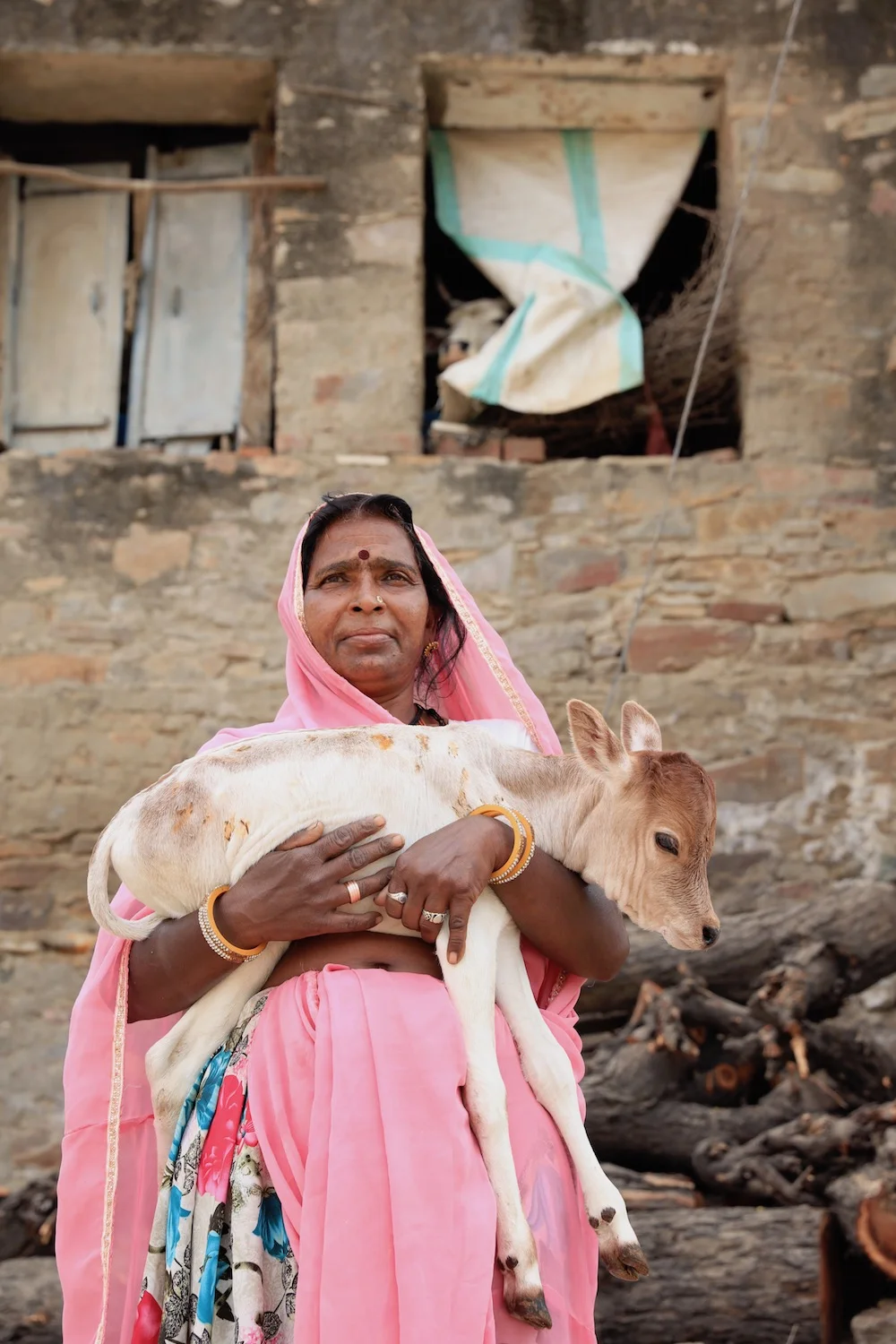

I feel even now, trying to describe a magazine that describes an impossible country, I’m failing somewhat, because India is beyond words. It is changing, harrowing, rousing, radiant and unparalleled. It is all things at once - constantly, unendingly - and more than I could ever say.
Food, Life and Love with Antonio Carlucio
The chef’s chef …
Interview by Liz Schaffer & Photographs by Tom Bunning
Very sadly Commendatore Antonio Carluccio OBE passed away in November last year. We hope you'll enjoy reading this interview with him, first published in Lodestars Anthology Issue 4, Italy.
Proudly declaring himself to be a cook rather than a chef (by his own definition a chef is professional while a cook does it for passion), Antonio Carluccio was the quintessential Italian about London. Driven by his zest for food, life and Italy, it was the passing on of wisdom that inspires much of Carluccio’s work. Arriving in England via Austria and Germany, where he worked as a wine merchant for almost a decade, Carluccio launched a fleet of eponymous restaurants, ran some of the capital’s culinary icons, became a BBC fixture and was awarded an OBE, which he retitled his Order Boletus Edulis - the Latin name for mushroom, his signature. Young at heart, Carluccio’s enthusiasm was invigorating; proof that life should be lived in the pursuit of pleasure, ardour and flavour.
Your background and training are quite unconventional. Can you tell us about this and how you came to be a cook?
I was born on the Amalfi Coast and was the fifth son of a stationmaster. [We were] transported up North where I grew up near Asti, then I moved a little further up and worked for Olivetti. At the time Olivetti was something fantastic but I didn’t like it very much and I was thinking I could holiday on the Riviera and [there] I met an Austrian girl and we fell in love. She came to work in Olivetti and when my youngest brother died in 1960 she said, “why didn’t I come to Vienna?”.
I cooked all the time because in Vienna to have the food my mother used to [make] I had to cook. I remembered what she was doing because in Italy when you are the young son you participate in everything.
In Vienna I started to cook what I knew. I didn’t know very much but I cook and cook and I’m sharing it with friends and frequenting bohemian cafes. You meet incredible people and I like art so I met Oskar Kokoschka and Max Ernst and we were sharing pasta. I was having fun and cooking all the time. It was only when I came to England in 1975 [and] I was still cooking, that my ex-wife [suggested], “why you don’t [enter] the best cook competition of The Sunday Times?”. I did and I was in the final but for me it wasn’t professional, I was a wine merchant, but funnily enough the press began to contact me. For them I was ‘the Italian’, flamboyant and believing in mushrooms and pasta, and so I was in the press.
At the same time my ex-brother-in-law Terence Conran, the owner of the Neal Street Restaurant in Covent Garden, asked me to run the restaurant and I said, “look I don’t cook, I don’t do administration, but I will be there doing the restaurant and running it”, which I did. Then came the BBC and I did quite a [few] food and drink programmes. My first Italian series was going to Italy doing twelve half an hours in all the regions. The other series was with Gennaro Contaldo but I did quite a lot in between and I was also writing books. I can’t stay doing nothing.
Do you think people are drawn to the Italian attitude towards food?
Italians live for food. When we were children going to school in the morning you’re already preoccupied by what you would eat in the day. It was the end of war time and the question to other children was “what will you eat for lunch?” and after the meal it was “what did you have for lunch?”, constantly. I remember in the afternoon, when you’re boys you do things, sometimes we were stealing a cabbage from the field and cutting it very, very thinly. Somebody [brought] olive oil, somebody a bit of vinegar and salt and pepper and we were making salad with bread. It was the best salad ever.



Is there an ethos or technique that sets your food apart?
I created a motto for my cooking, ‘mof mof’, minimum of fuss, maximum of flavour, and as such I don’t go to the lengths to elaborate on food because the most important thing is the taste. If you have the taste the look can be indifferent.
In fact we have items in Italy called brutte ma buone, ugly but good; fruit, even biscuits, that show you the possibility of the flavour. I dedicate everything to that which is obtained by regional food. Italy is famed for its 20 diverse regions.
What do you think makes them so distinctive?
Italy was unified in 1861 but I think in spirit each region is a country. You find culture in Italy from everywhere because each one was coming, the French, the Persians, everybody, to Italy. Even Alexander the Great was there. They united Italy in 1861 but there are different languages, different dialects, different customs. But they are united in thinking of the food as one of the best things.
They may be united by a love of food but is there still competition between the regions?
Between little villages! If somebody makes a dish someone in the next village will say, “ahh but I do it with this and this and this”. Immediately there is a conversation. I remember as a child if you were encountering somebody on road and it was lunchtime you would say, “do you want to have lunch?”. It was very simple. They would come home with you. So this is the attitude of the Italian, they really care. I always say that Italy has two or three million Michelin starred chefs, they’re all the housewives.
What do you love most about Italian cooking?
The Italians, what they have in front of others, the Germans, Austrians, English, French, is the attitude. I remember when we used to live in the train station my mother would say, “go downstairs and see if the trains are departing on time” in order to put the pasta in the water so that when papa was coming up the pasta was perfect. When you grow up with this sense of procedure and [significance] then you know food is important. She was really thinking to please other people because cooking for others is an act of love.
[Because of the various regions and diversity] I think that Italy has a more complete menu. There are 600 shapes of pasta and each can be done as a specialty with a special sauce, special ingredients. Italians want good taste and they’re prepared to use all those wonderful shops. In Napoli especially there were shops selling only pasta, and the pasta was loose, not in packets but in drawers, and all the leftovers were put into one ‘special’ and this is for pasta e fagioli - bean soup with pasta - which is wonderful, all bits and pieces. So they really have fun. While other nations have fun in eating the Italian has fun in thinking and imagining it.
What advice do you have for prospective chefs?
You have to desire food, not being greedy but being discerning about what you eat, and pay attention and love your food. If you don’t have those three things you stop cooking because there would be no point, it would just be a job, no fun. Food, it’s not only preparation but fun in eating. It’s good for the brain, for the body, the spirit, for everything.
The New Zealand Magazine
Introducing the Lodestars Anthology New Zealand magazine. Prepare to pack your bags ...
We are pleased to announce that our ocean, wilderness, adventure, design, food, art and wine filled New Zealand magazine will be arriving back from the printers later this week - which means that everyone who pre-ordered with have their little bundle of printed wanderlust sent out to them over the weekend. We can't wait to share our latest project with you - the work of many wonderful writers, photographers and illustrators from across the globe. In the magazine we chat to chef Peter Gordon and actor/wine maker Sam Neill, kayak around Abel Tasman National Park, sip wine in Nelson, cycle from the alps to the sea, discover the food and beaches of Auckland, find the perfect cup of coffee in Wellington, encounter Kiwis on Stewart Island, seek out calm corners shrouded in history, learn to be mindful, sleep in luxury under the stars, tackle the Great Walks, return home and get swept up in Queenstown's calm - and that's just a few of the adventures found upon our pages!

You can order your copy (as well as back issues and subscriptions) by clicking here. For now, here is a sneak peak of some of our New Zealand pages - happy reading (and travelling too)!


"We ventured inland across the Alps, through the beech forests and rugged schist ravines of the Haast Pass - once an ancient Māori greenstone trail - emerging into what appeared to be an entirely different country."
.

"Not only do artisans and small-batch producers buy each other’s work, they often trade goods based on what’s available. Art for firewood. Jam for flour."

"There really is no place like home. I’d just had to go to the other side of the world and back to get here."



"Ideal for anyone yearning to go off-grid, parts of Fiordland have never encountered a human visitor - but perhaps that’s where its beauty lies, in its inaccessibility."

"This is a beach for solitude, for long walks, and for washing the city away; where heartache and hustle are given up to the waves."


Paradise Found
When the winds stir up and clouds descend, it is an island that offers sanctuary - among other deep-sea and earthy delights . . .
When the winds stir up and clouds descend, it is an island that offers sanctuary - among other deep-sea and earthy delights.
Words & Photographs by Lucy Howard-Taylor
702 kilometres northeast of Sydney, at the intersection of five ocean currents and a submerged continental rib, thrusts forth the remains of an ancient shield volcano. Eroded over seven million years to one fortieth of its original size, Lord Howe Island rises like a wind-shorn jewel from the waters of the Tasman Sea; eleven kilometres long by as little as three hundred metres wide, a vibrant blue-green, its twin peaks capped in cloud. From the sky, the island almost looks like the mossed jawbone of some long-extinct creature given up by the sea.

It may be less than a two hour flight from the crush of Sydney, but the moment you step from the Dash-8 onto the tarmac of Lord Howe’s only airstrip, there is a palpable sense of remoteness. There is no mobile reception on the island and no traffic lights (with next to no cars, bicycles silently reign supreme), but the lack of modern conveniences one might mistake for essential cannot wholly account for the subtle separation felt upon arriving in this UNESCO World Heritage listed property. It is disarmingly beautiful, in an unruly, enveloping way that robs you of words. But there is a strangeness to this wilderness too, with its opalescent lagoon fringed with coral, its deep green canopies of kentia palms, cowrie-studded beaches and panoply of birds.

Travelling in the middle of winter to a subtropical island and the world’s southernmost coral reef may seem perverse, but Lord Howe wore its wild weather hat well. On the tarmac I was left breathless by a brisk wind that tasted of salt and wet leaves. In bed that first night, with large fronds bashing each other outside my window, the roar of the trade winds was almost animal. During the day rain rolled in with no warning and cleared just as suddenly, leaving everything glistening. A wind cheater was essential, and should you go out at night, a torch: there are no streetlights here and the inky completeness of the darkness, broken by a milky wash of stars, took this city dweller by surprise. First things first, hire a bike, even if like me you cannot ride one. With only 360 permanent residents, a maximum of 400 tourists at any one time and 13 kilometres of undulating scenic road, there is ample opportunity for a novice to practice unobserved. Pack a picnic and ride to the preternaturally still and secluded Old Settlement Beach, where three men, three women and two boys came to live in 1833, trading with passing vessels. Or pop over to Ned’s Beach where you can snorkel among fantastically coloured coral gardens (there is an honesty box for hiring gear), or wade closer to shore and hand-feed swarms of tropical fish with names like Silver Drummer and Spangled Emperor. At dusk, throngs of muttonbirds return to their burrows in the low-lying palm forests nearby. As sunset arrives, their distinctive, searching cries can approach an almost human wailing.
These pristine waters host some of the best diving in the world, with an unearthly sunken landscape of volcanic drop-offs, trenches and caves lined with black coral trees, branching gorgonians and over 90 varieties of luxuriant subtropical coral. For those for whom the prospect of coming face to face with the blue teeth of a Harlequin Tuskfish in an underwater canyon sounds vaguely terrifying, you can charter a glass-bottomed boat instead and enjoy the spectacle dry and unmolested from the crystalline surface of the lagoon.

At the southernmost end of Lagoon Road is the start of the Little Island Track, which follows the shoreline to the black basalt cliffs of Mount Lidgbird. Lord Howe is a walker’s delight and this marked and level track meanders its way past picturesque Lovers Bay and through thickly crowded valleys of soughing kentia palms (keep your eyes peeled and you might see a native woodhen grunting happily in the shadows), to the base of the mountain and its stony shores of calcarenite and dark sea-sculpted rocks. Here, especially between March and October, you will see wheeling clouds of one of the world’s rarest seabirds, Providence petrels, diving over the cliffs as they chatter and return to breed. For the more energetically inclined walker, a climb to the scrubby top of Malabar Hill leads to one of the best views of the island and a dramatic scraggy drop to the sea. Alternatively, sign up for the famous day hike to the summit of Mount Gower, where you will find yourself among the twisted trees and inveterate mist of what the New South Wales Office of Environment and Heritage actually designates as Gnarled Mossy Cloud Forest, which sounds more enchanted than ecological.

Enchantment is a recurring theme here. As the days pass, I discover that there is something about this island that is both calming and unexpectedly foreign, a wandering otherness that finds its way in on the throats of seabirds and endows plants with a luminous variety of green. The natural landscape is not only astonishingly lush - isolation, topographic peculiarity and igneous soils have spawned a paradise of ferns, palms, orchids and microhabitats - but feels unusually ancient, almost untouchable. Nowhere is this impression more powerful than in the broody Valley of the Shadows, where 20 metre high trees mottle the light. To stand alone amid this silent grove of banyans, their aerial roots muscling to the ground like the suspended legs of giants, is to realise the difference that is Lord Howe Island. It is to approach the primeval and be at home amongst the extraordinary.
From Lodestars Anthology Issue 3, Australia
[ecwid_product id="64214991" display="picture title price options qty addtobag" version="2" show_border="1" show_price_on_button="0" center_align="1"]






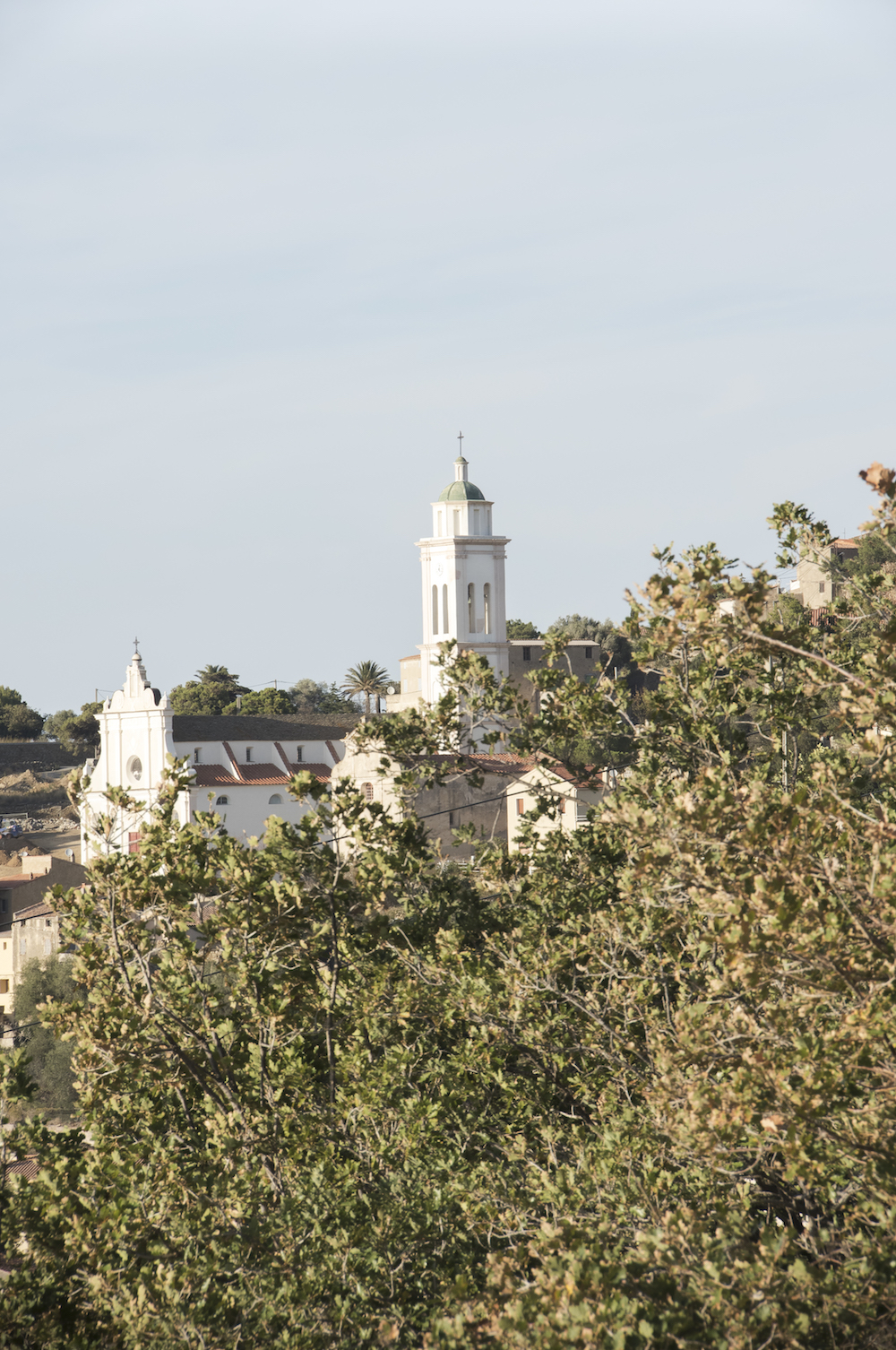




























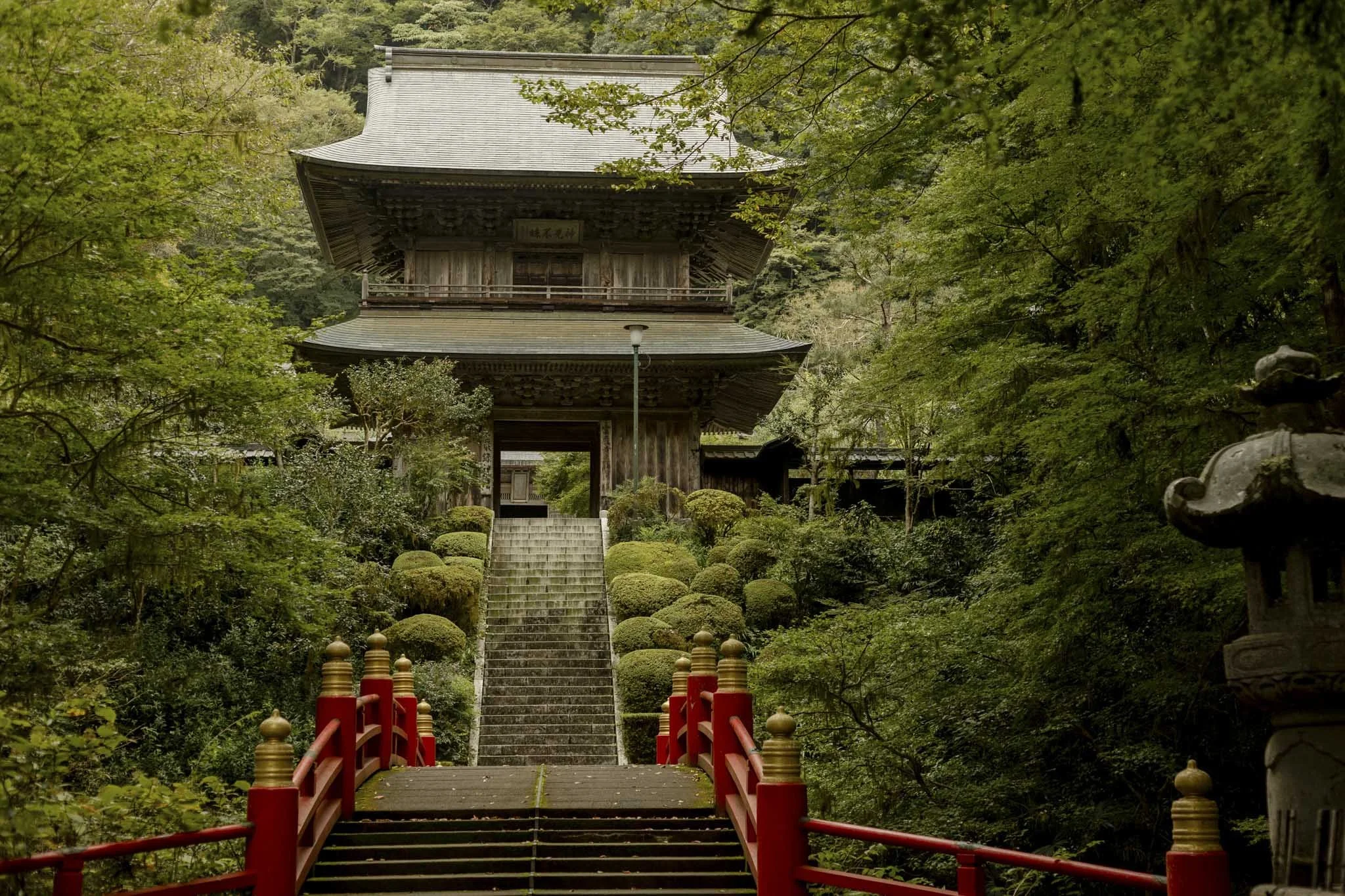














Celebrating Venice’s artisans and traditions.